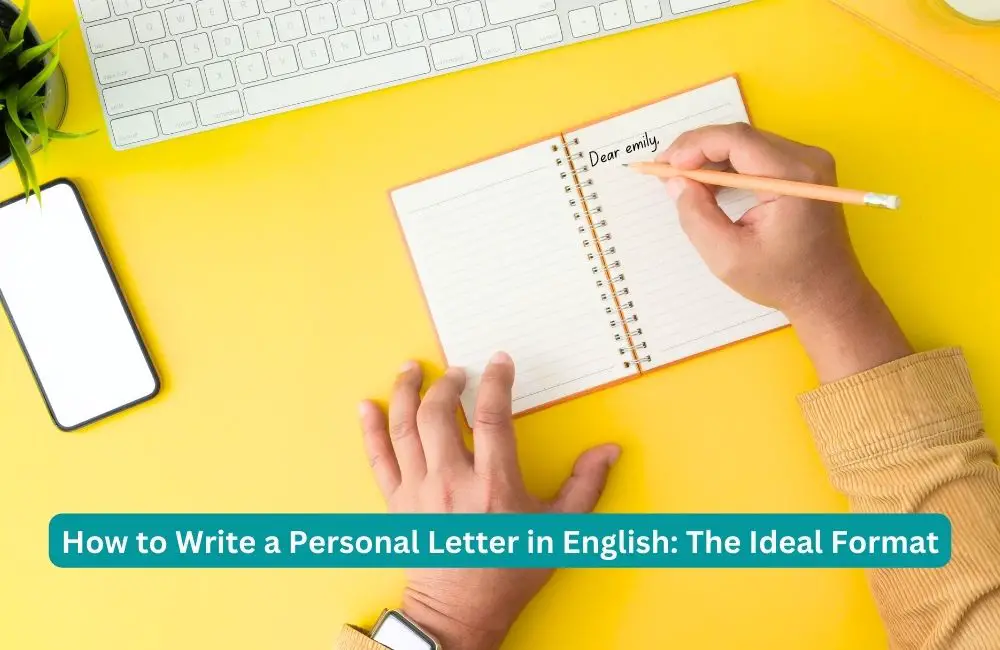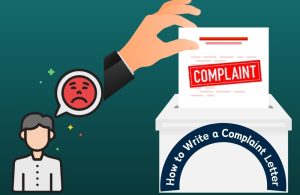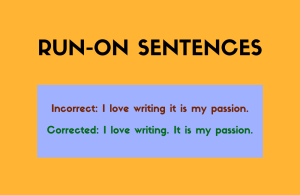This article covers the following areas –
- What Is a Personal Letter?
- The Ideal Format of a Personal Letter
- Tips for Effective Letter Writing
- Final Thoughts
- Test Your Learnings – Quiz
- Frequently Asked Questions
Crafting a personal letter in English can be a delightful and meaningful way to communicate with friends, family, or acquaintances. It’s a chance to express thoughts and feelings more intimately and personally than digital communication. In this guide, I’ll take you through the ideal format for writing a personal letter in English, infusing it with original insights and comprehensive details.
The ideal format of a personal letter typically includes a heading with the writer’s address and date, a salutation, an introductory paragraph, body paragraphs, a concluding paragraph, a complimentary close, and the writer’s signature.
For more in-depth guidance on each component of a personal letter, including tips on content and style, continue reading below.
What Is a Personal Letter?
A personal letter is a form of written communication that is more informal and conversational than formal letters or business correspondence. It is typically used for personal communication rather than professional purposes. Here are some key aspects that define a personal letter:
- Intended for Personal Connections: Personal letters are usually written to friends, family, or acquaintances. They are meant for individuals with whom the writer has a personal relationship.
- Informal Tone: Unlike formal letters, personal letters have a relaxed tone. The language is more conversational, reflecting the writer’s personal voice and the closeness of their relationship with the recipient.
- Varied Content: The content of a personal letter can vary greatly depending on the writer’s intent. It can include updates about the writer’s life, expressions of feelings, congratulations, condolences, or just a general catching-up.
- Flexible Format: Personal letters do not adhere to a strict format. While there are general guidelines (like starting with a greeting and ending with a closing), the structure can be adapted to suit the writer’s style and the letter’s purpose.
- Emotional Aspect: These letters often carry an emotional component, sharing feelings, thoughts, and experiences in a way that is more intimate than digital communications.
- Physical or Digital Form: While traditionally handwritten and mailed, personal letters can also be sent electronically via email. However, handwritten letters often hold more sentimental value.
- Personalized Greetings and Closings: The salutation and sign-off in personal letters are usually tailored to the relationship with the recipient, ranging from affectionate and warm to more general and friendly.
- Unique and Personal Touch: Writers of personal letters often include personal anecdotes, jokes, or references known only to the sender and the recipient, making these letters highly personalized and special.
A personal letter is a blend of informality, personal touch, and emotional expression, making it a cherished form of communication in an increasingly digital world.
The Ideal Format of a Personal Letter
Writing a personal letter is a beautiful way to communicate with someone in a more intimate and thoughtful manner. Unlike other forms of communication, a personal letter is tangible and can be held, treasured, and revisited. It’s a way to convey emotions, share experiences, and maintain connections in a deeply personal way.
Whether you’re writing to a friend, family member, or a loved one, the format of a personal letter can help convey your message in a heartfelt and organized manner. Let’s explore the ideal personal letter format to ensure your correspondence is as engaging and meaningful as possible. Let’s start with a sample letter and then gradually learn about all the parts.

This format is a classic approach to writing a personal letter. It maintains a balance of friendliness, warmth, and personal touch while also being structured and easy to follow. The content should be tailored to reflect your relationship with the recipient and the message you wish to convey.
1. Date and Address
When composing a personal letter, the placement of the date and your address is a key element in its structure. Let’s elaborate on this and show how it is typically done.
Date:
- Position: The date is typically placed at the top right-hand corner of the page. This is a conventional format followed in many types of formal and informal correspondence.
- Importance: The date records when the letter was written. It’s crucial for the recipient to know when you sent the letter, especially if you’re discussing timely matters or making plans.
- Format: The format of the date can vary. In the United States, it’s common to write the month, day, and year (e.g., January 14, 2024). However, in other countries, the day may precede the month (e.g., 14 January 2024). Use the format that is standard in your location or the recipient’s.
Address:
- Position: Your address follows the date, aligned to the right. It sits at the top of the page, just below the date.
- Relevance: Including your address is a traditional practice, though not as essential in the age of email and instant communication. However, it adds a personal touch and can be particularly meaningful in a keepsake letter. It also serves a practical purpose if the recipient wishes to respond via traditional mail.
- Details: Your address should include your street address, city, state, and ZIP code. Including your email or phone number is optional and depends on your relationship with the recipient and your communication preferences.
[Your Full Name]
[Your Street Address]
[City, State, Zip Code]
[Date: January 14, 2024]
[Recipient’s Full Name]
[Recipient’s Street Address]
[City, State, Zip Code]
Dear [Recipient’s Name],
[Body of the letter]
Sincerely,
[Your Name]
2. Greeting/Salutation
A personal letter’s greeting, or salutation, is a crucial component that establishes the tone of your correspondence. It’s the first thing the recipient reads after your address and the date, setting the stage for everything that follows. Let’s delve into choosing and using the right salutation in a personal letter.
Choosing the Right Salutation
- Understand the Relationship:
- Close Relationships: For friends, family members, or close acquaintances, you can use a warm and affectionate greeting. For instance, “Dear [First Name],” “Hi [First Name],” or even a more endearing term if appropriate.
- Formal or Distant Relationships: If the letter is to someone you don’t know well or in a more formal context, using “Dear [Mr./Ms./Dr. Last Name]” is appropriate.
- Setting the Tone:
- The salutation directly influences the tone of your letter. A casual greeting like “Hi” or “Hello” suggests a more relaxed and informal letter. On the other hand, “Dear” is universally suitable as it works well in both formal and casual contexts.
- Cultural Sensitivity:
- Be mindful of cultural differences in addressing someone. In some cultures, using the first name directly can be seen as too informal or disrespectful, especially if the recipient is much older or in a position of authority.
Placement of Greetings/Salutation in the Letter:
- The greeting is placed at the left margin, following the address and the date.
- It’s typically followed by a comma (e.g., Dear Emily) or a colon in more formal settings (e.g., Dear Mr. Smith:).
- Start the body of your letter in the next line, ideally leaving a space after the salutation.
By choosing the right salutation, you respect the recipient and set an appropriate atmosphere for your message. Whether it’s a friendly catch-up or a more formal discussion, the greeting is vital in bridging your connection with the reader through your words. Let’s see some examples to make the idea clear.
Letter to a Close Friend
Dear Emily,
I hope this letter finds you well. I’ve been thinking about our last meeting and…
Letter to an Acquaintance
Hello Mr. Smith,
I wanted to reach out to discuss our upcoming project…
Formal Letter
Dear Dr. Johnson,
I am writing to express my gratitude for your assistance on…
In these examples, the greeting is shown in bold to highlight its importance in the letter. In a Word document, you wouldn’t necessarily need to bold the greeting; it’s just done here for emphasis. The content following each greeting would continue in a normal, non-bolded font, forming the body of the letter.
3. The Body: Heart of Your Letter
When writing the body of a personal letter, it’s essential to create a narrative that’s both engaging and meaningful. This part of your letter is where you share your thoughts, experiences, and emotions, essentially the “heart” of your correspondence.
The body typically consists of three parts: the opening paragraph, the middle paragraph, and the concluding paragraph. Each plays a unique role in ensuring your letter is cohesive, thoughtful, and enjoyable to read.
Opening Paragraph: Creating a Welcoming Start
The opening of your letter should be warm and engaging. It’s like the beginning of a conversation, setting the mood for what’s to follow.
- Purpose: To greet the recipient and enter the letter’s main content.
- Approach: Start with a friendly inquiry about their well-being or a cheerful comment.
- Example:
- “I hope this letter finds you in great spirits. The last time we spoke, you mentioned your gardening project. How is it coming along?”
Middle Paragraphs: Delving into Details
This is the core of your letter, where you share news, recount experiences, or discuss plans.
- Purpose: To provide the main content of your letter, whether it’s news, stories, or thoughts.
- Approach: Use personal anecdotes, descriptive language, and express emotions to make it more engaging.
- Example:
- “I recently started a cooking class, which reminded me of our college days and those experimental dinners we used to make. Just last week, I successfully managed to cook a Thai curry, which turned out surprisingly well!”
Concluding Paragraph: Wrapping Up Thoughtfully
End your letter by summarizing your key points or expressing a desire to hear back.
- Purpose: To conclude your letter on a positive and forward-looking note.
- Approach: Express your eagerness to maintain contact or propose future plans.
- Example:
- “I’m really looking forward to catching up more. Maybe we could plan a get-together soon or at least a video call. It would be wonderful to hear about all your news as well.”
When combined, these elements make up the body of a personal letter. Here’s how they might look in a full letter:
Dear Emily,
I hope this letter finds you in great spirits. The last time we spoke, you mentioned your gardening project. How is it coming along?
I recently started a cooking class, which reminded me of our college days and those experimental dinners we used to make. Just last week, I managed to successfully cook a Thai curry, which turned out surprisingly well!
I’m really looking forward to catching up more. Maybe we could plan a get-together soon or at least a video call. It would be wonderful to hear about all your news as well.
Warm regards,
[Your Name]
In this example, the letter starts with a friendly and engaging opening, delves into personal experiences in the middle, and concludes with a hopeful and positive note, making it a complete and heartfelt message.
4. The Closing: All’s Well, Ends Well
The closing of a personal letter is as important as its opening. It’s your final chance to leave an impression and encapsulate the tone and sentiment of your correspondence. A well-crafted closing ties everything together and ends your letter on a warm, positive note.
Key Aspects of a Good Closing
- Reflective Summation: Briefly reflect on the content of your letter or reiterate your feelings. This could be a summary of your main points, a restatement of your affection or appreciation, or a final thought that echoes the sentiment of your letter.
- Future Outlook: Express hope or plans for future interactions. This could be a wish to hear back, a suggestion for future correspondence, or anticipation of a planned event or meeting. It shows continuity and a desire to maintain the relationship.
- Personal Touch: End with a phrase that is consistent with your relationship with the recipient. The closing should feel as personal as the rest of your letter.
Choosing the Right Closing Phrase
Select a closing phrase that aligns with the tone of your letter and your relationship with the recipient:
- For Close Friends or Family: “Love,” “With love,” “Take care,” “Yours always.”
- For Formal or Less Familiar Relationships: “Sincerely,” “Best regards,” “Warm regards,” “Respectfully.”
Adding Your Signature
After your closing phrase, leave space for your handwritten signature (if it’s a printed letter). If it’s a digital letter or email, type your full name. Your signature personalizes the closing, making it feel more authentic and intimate. Let’s see some examples of closing a personal letter.
Final Touch: The Postscript (Optional)
Sometimes, you might want to add a postscript (P.S.). This is an excellent place to include a final thought, a lighthearted comment, or an additional piece of information that didn’t fit into the body of your letter.
Here are examples of both an informal and a formal letter closing.
Informal Letter Closing
Looking forward to our next adventure. Take care,
Warmly,
[Your Handwritten Signature, if a printed letter]
[Your Name]
P.S. I almost forgot to mention that I’ve included a recipe for that blueberry pie we discussed. Let me know how it turns out when you try it!
Formal Letter Closing
Thank you for your consideration.
Best regards,
[Your Handwritten Signature]
[Your Full Name]
P.S. Please find attached the detailed report as discussed in our meeting. I believe it will provide valuable insights for our project.
Remember, a thoughtful closing ensures that your letter ends on a high note. It’s not just about ending a letter; it’s about leaving a lasting emotional impression reinforcing the bond between you and the recipient.
Tips for Effective Letter Writing
Writing a letter, whether it’s for a personal or formal purpose, is a meaningful way to communicate. It allows you to express thoughts and feelings more reflective and personally than digital communication.
However, effective letter writing requires more than just putting your thoughts on paper. It’s about making your letter engaging, clear, and thoughtful. Here are some tips to help you craft a compelling letter:

1. Be Yourself
Write as if you’re conversing with the person. Authenticity in your tone and content makes the letter more relatable and cherished. This doesn’t mean you should ignore grammar and structure, but rather that your personality should shine through. The reader should be able to hear your voice in their mind as they read your words.
2. Keep the Reader in Mind
Consider the recipient’s perspective and tailor your content to what interests them or matters. This shows that you value and understand them. For instance, if you’re writing to an old friend, reminisce about shared experiences or update them about common friends. If it’s a formal letter, focus on information relevant to the recipient’s interests or needs.
3. Proofread and Edit
While personal letters don’t demand perfect grammar, reading through and correcting glaring errors is still important. This ensures clarity and shows effort in your communication. Spelling mistakes or grammatical errors can distract from the message and make the letter less enjoyable to read.
4. Use Quality Stationery
Although unnecessary, using good-quality paper or a special letter pad can enhance the reading experience. It adds a touch of elegance and shows that you’ve taken extra care in preparing the letter. Quality stationery is a thoughtful touch, especially for special occasions like thank-you notes or condolences.
5. Add a Personal Touch
Adding a personal element, like a hand-drawn doodle, a dried flower, or a photo, can make your letter stand out. It’s these little touches that turn a simple letter into a keepsake.
6. Keep It Concise
While it’s tempting to include every detail, keeping your letter concise and to the point is important. Long, rambling letters can lose the reader’s interest. Aim for clarity and brevity, focusing on the main points you want to convey.
7. Use the Appropriate Tone
The tone of your letter should match its purpose. A letter to a close friend can be informal and chatty, while a letter to a business associate should be more formal and to the point. Matching your tone to the context shows social awareness and respect for the recipient.
By following these tips, you can enhance the quality and impact of your letters, making them a joy to write and a pleasure for the recipients to read. Effective letter writing is an art, and like all arts, it flourishes with practice and attention to detail.
Final Thoughts
a personal letter, while allowing for flexibility and personal expression, follows a basic structure that includes the sender’s address and date, a warm greeting, a body comprising an introduction, detailed paragraphs, and a conclusion, followed by a polite closing and signature.
This format helps maintain clarity and personal touch, ensuring the letter is both engaging and meaningful to the recipient. Understanding and applying these elements can elevate your letter writing, making your correspondence memorable and impactful.
Test Your Learnings – Quiz
Frequently Asked Questions
The first step in writing a personal letter is to start with a greeting. This sets a friendly tone and addresses the recipient by name, making the letter more personal.
A personal letter should be formatted with a greeting, body, and closing. The greeting addresses the recipient, the body contains the main message, and the closing offers a friendly conclusion.
An appropriate greeting for a personal letter includes “Dear [Name],” “Hi [Name],” or “Hello [Name].” This makes the letter feel warm and personalized.
The body of a personal letter should include personal thoughts, stories, and updates. This is where the main message is conveyed, making the letter meaningful and engaging.
The closing of a personal letter can be made effective by using phrases like “Best wishes,” “Take care,” or “Love.” This leaves a positive impression and wraps up the letter warmly.
A personal letter should have a warm and conversational tone. This makes the letter feel more like a friendly conversation rather than a formal document.
A personal letter can be made more engaging by including anecdotes, questions, and personal reflections. This keeps the recipient interested and encourages a response.
The best way to start a personal letter to a friend is with a casual greeting like “Hi [Name]” or “Hey [Name].” This sets a friendly and relaxed tone from the beginning.
The recipient’s address should be written on the envelope, not inside the letter. This ensures that the letter reaches the correct person without cluttering the content.
Avoid using overly formal language and impersonal phrases in a personal letter. This keeps the letter warm and friendly, maintaining a personal connection with the recipient.







